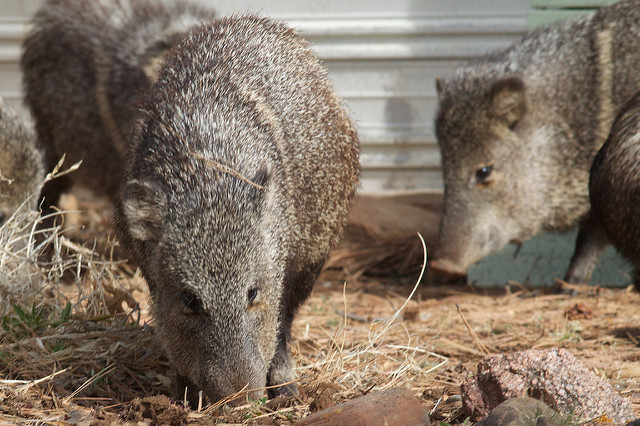Interesting Stuff with Ole Olafson: All about javelinas
The pig-like animals have recently been seen eating plants on SCC’s campus
April 10, 2017
In late January, a pair of javelina made their home on the campus of Scottsdale Community College for several days. The javelina is a desert mammal, about as big as a medium sized dog, whose more proper name is “collared peccary.” The collared peccary is a pig-like animal with tusks, thick hide and coarse, wiry hair.
As temperatures begin to rise this spring, more and more creatures who were dormant during the winter months will become active again. Following this experience with wild visitors on campus, the Chronicle wanted to find out what steps the school takes to keep students safe and what students should do to ensure their own safety around desert animals.
Commander Les Strickland is the head of Public Safety at SCC. He said the department doesn’t have an official policy on javelina since this was the first time that he knows of that the animals have been present on campus.
“We were aware they were here [on campus]. We contacted ‘Salt River’ [Police Department] since we’re on their [tribal] property. They, I know, were going to work with ‘Arizona Game and Fish’, [to remove the animals] but the javelina left the campus. Strickland said about the January visitors.
Strickland suggested that when students encounter potentially dangerous wildlife on campus they should avoid the animal and contact public safety.
Edward Weigand is the administrator of “The Center for Native and Urban Wildlife” at SCC. He said that the two javelina may have been mates and looking for a place to start a family. But, judging from the impact they made on several campus plants, he thinks they may have just been pigging out.
“They like cactus and they dig in the ground,” Weigand said. “So they came on campus and tore up everything. They were getting food everywhere.”
“They found habitat, they found food and so campus became a place to hang out,” Weigand said. “That’s one of the reasons they stayed, at least, for several days. It was close to a week that they were here.”
The biggest losers seem to be the tortoises that live in “Toad Hall” wildlife exhibit. Weigand said their patch of cauliflower, which grows outside the exhibit building, was dug up and subsequently eaten by the pair of peccaries.
“They’re not really dangerous unless we make a situation where we put them in danger, Weigand said.
We might not get a chance to see collared peccaries on our campus again. But if you do, Weigand offered the following advice to students.
“Give them space, respect them, enjoy them, watch them, take some pictures and consider yourself lucky you saw some cool wild animals on campus,” he said.


